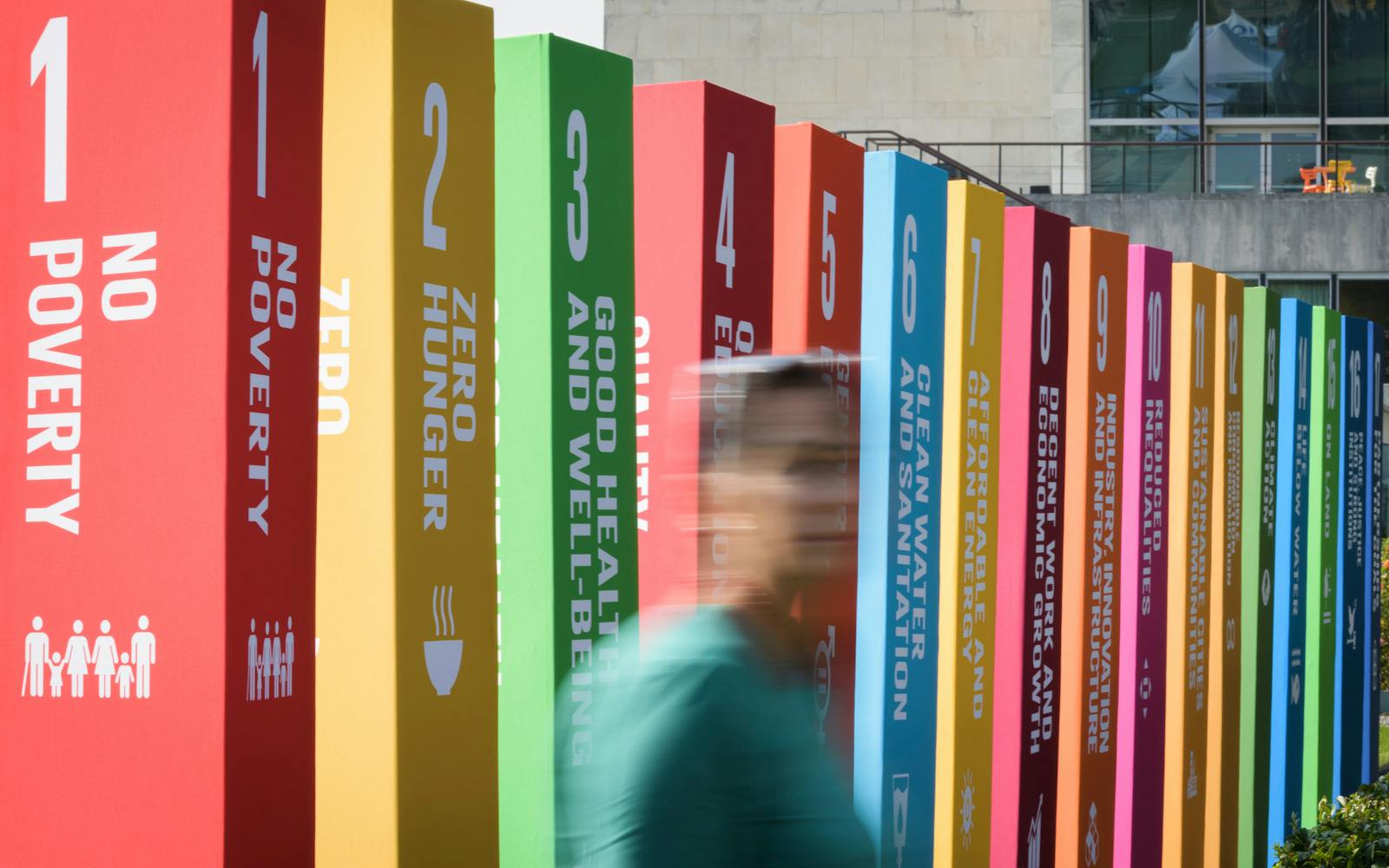
Experts across the U.S. are proving that the Sustainable Development Goals (SDGs) can be used to create sustainable, resilient, and inclusive communities — for all Americans. Photo: UN Photo/Manual Elías
There is a growing movement across the United States — fueled by students, local leaders, and community members of all kinds — to harness the power and potential of the ambitious global plan to address poverty, hunger, inequality, and climate change to build a better America for all. The United Nations Foundation’s Director of U.S. SDG Policy Planning Caroline Kleinfox explains how the Sustainable Development Goals offer a unifying blueprint that people across the country can get behind.
A more just, sustainable, and prosperous future is within reach for all Americans. We can — and must — realize that future by working together on the issues that matter to us all.
In my role as Director of U.S. Sustainable Development Goals (SDGs) Policy Planning at the UN Foundation, I have the great privilege of meeting with people across the country who are doing exactly that: bettering their communities and striving to ensure no one is left behind. Take the students at Carnegie Mellon University, who are embracing the values enshrined in the Goals and leading the school’s fourth Voluntary University Review on the SDGs. Then there are local officials from San Antonio to Hawai‘i County, San Diego and beyond, who are working with local universities to build transparent, accountable, and locally aligned SDG initiatives. In Indiana, Minnesota, and Wisconsin, researchers are meeting with leaders across their states to share the power of SDG data for decision-making. And people of all generations are engaging in dialogue and advocacy in communities and campuses across the country through the United Nations Association of the USA. While this work takes many forms, one thing is clear: The spirit of the SDGs is alive and well in the U.S., and it is inspiring innovation and leadership across states, sectors, and generations.
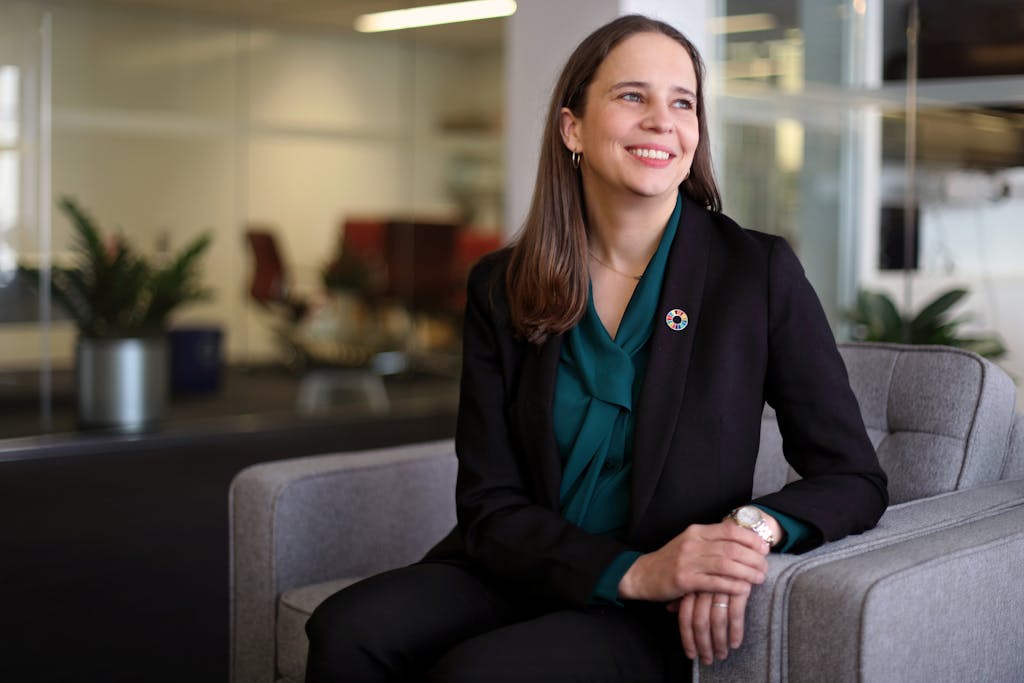
The UN Foundation’s Director of U.S. SDG Policy Planning, Caroline Kleinfox, is exploring how the Global Goals are rooted in American values. Photo: Madalyn Owen
This groundswell of support for the SDGs comes at an inflection point for the 2030 Agenda. Last year marked the halfway point to the 2030 deadline, which saw organizations and governments across the world grapple with the painful recognition that only 15% of SDG indicators are on track. At the same time, they heard urgent calls to accelerate progress and collaboration toward our shared objectives. The Hawai‘i SDG Youth Council, comprised Indigenous middle school and high school students from the Kamehameha Schools, voiced a particularly powerful call to action in their opening statement to the state’s Voluntary Local Review (VLR), which reports state-level progress toward the SDGs:
“We, the youth of Hawai‘i, plead with you to act now. Let us look to the past for wisdom and to the future for survival. We only have one Island Earth, let us do our best to take care of it and each other. We are one species, with one planet, one chance. He ali‘i ka ‘āina, he kauwā ke kanaka.”
Amid Polarization, the Goals are Building Unity
This urgency is warranted as domestic progress across the SDGs remains uneven. The 2023 Sustainable Development Report showed that while the U.S. is not on track to achieve any individual Goal, there are upward trends for 10 of the 17 Goals — though this progress is unequal across racial and ethnic groups. The challenges Americans are grappling with are vast: an “epidemic of loneliness and isolation”; increasing and intensifying disasters fueled by climate change; the reversal of the constitutional right to an abortion; and extraordinary gun violence, now the leading cause of death for children in the United States.
Despite this, or perhaps because of this, many communities, youth leaders, policymakers, and individuals are identifying with the SDGs as a point of unity — not a set of Goals imposed upon them, but aspirations that are rooted in common values identified through dialogue and deep work from citizens all around the world. The challenges we face now, and the benefits of achieving these goals, will affect all Americans. As Ali Zaidi, Assistant to the President and National Climate Advisor, said during a fireside chat at our flagship event in September: “We all share in the challenge. Hurricanes don’t swerve because you live in a red district or a blue one. Wildfires don’t pick and choose your home based on who you voted for.” This is a people-first framework, built on the promise of Leave No One Behind: that we must commit to reach those most in need first.
SDG Innovations Across America
This year, many long-standing efforts to advance the SDGs are moving forward, others are being reinvigorated, and entirely new initiatives are emerging. In many cases, these initiatives are modeled either directly or indirectly on early SDG localization innovations from across the country. In Hawai‘i, for example, the incredible Hawai‘i SDG Youth Council is now mentoring other students across the state in a new effort to raise awareness and ambition for the Goals among young people via the Hawai‘i Green Growth Local2030 Hub partners through the Local2030 Islands Network with Guam, Palau, and other SDG leaders. Across the country, people are pioneering smart, strategic, and innovative ways to take local action on the Global Goals. A few highlights:
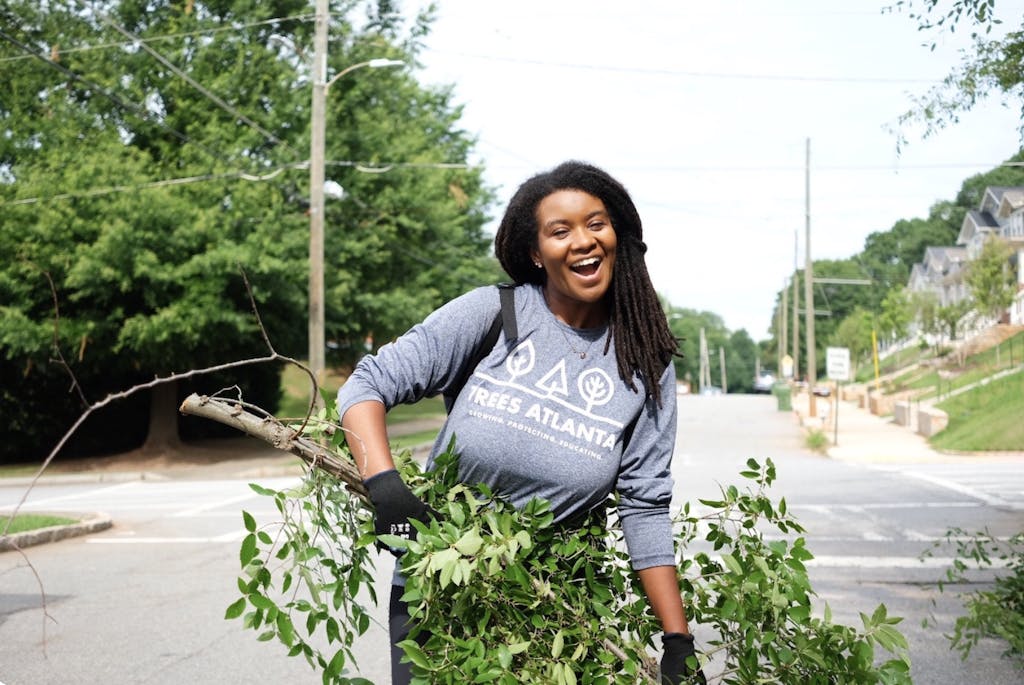
For the Trees Atlanta Urban Forestry Crew, sustainability is an everyday endeavor as the team waters, prunes, and weeds its trees year-round. Photo: Courtesy of Trees Atlanta
1. Atlanta launched the One Million Trees Initiative to plant and conserve trees across the metropolitan area by 2030. Once completed, the initiative is projected to capture 1.4 billion gallons of water and 530,000 tons of carbon dioxide annually. It’s all part of a sustainability plan rooted in the SDG framework to expand the city’s green spaces and reduce its carbon footprint — a major challenge given that Atlanta is home to the world’s busiest airport.
2. The University of California, Davis is working with the City of Sacramento to complete the city’s first VLR on the SDGs. The city recently conducted extensive community outreach to complete a new General Plan 2040, which recently went into effect. Through this collaboration, the university and the city are aligning city principles, policies, and programs with the Global Goals. The VLR will examine all 17 SDGs and highlight innovative approaches to SDG-related community engagement, inclusion, and climate action, as well as to arts and culture.
3. The New York City Junior Ambassadors program fosters global citizenship among public middle school and high school students by connecting local to global, guided by the Sustainable Development Goals framework. Each year, students are inspired by the inner workings of the United Nations and the profound impact of New York City on the global stage. Since the program’s launch in 2015, about 5,300 students and educators from classrooms and after-school programs citywide have participated. This year, the city is hosting approximately 740 students and educators, a testament to the program’s enduring impact and resonance within the city.
4. In Michigan, the Community Foundation of Greater Flint (CFGF) has been working with the SDGs as a framework for measuring impact. Over the past two years, CFGF has mapped its grantmaking and community leadership work to specific SDG targets and intends to use the targets to classify and monitor its grantmaking going forward. What began as an effort to assess the foundation’s impact has led to the development of additional use cases for the SDGs across all functions of the foundation, including communications, community outreach, development, financial investing, donor advising, and strategic planning.
5. Global Philadelphia’s SDG initiative is creating 17 unique murals to build awareness and community around the Goals, connecting them directly with people and organizations that care about the SDGs. For each mural, the organization matches an artist, funder, and local nonprofit working to advance a specific Goal. In a city known as the “Mural Capital of the World,” the result is a powerful public communications campaign embedded within a deep local artistic tradition.
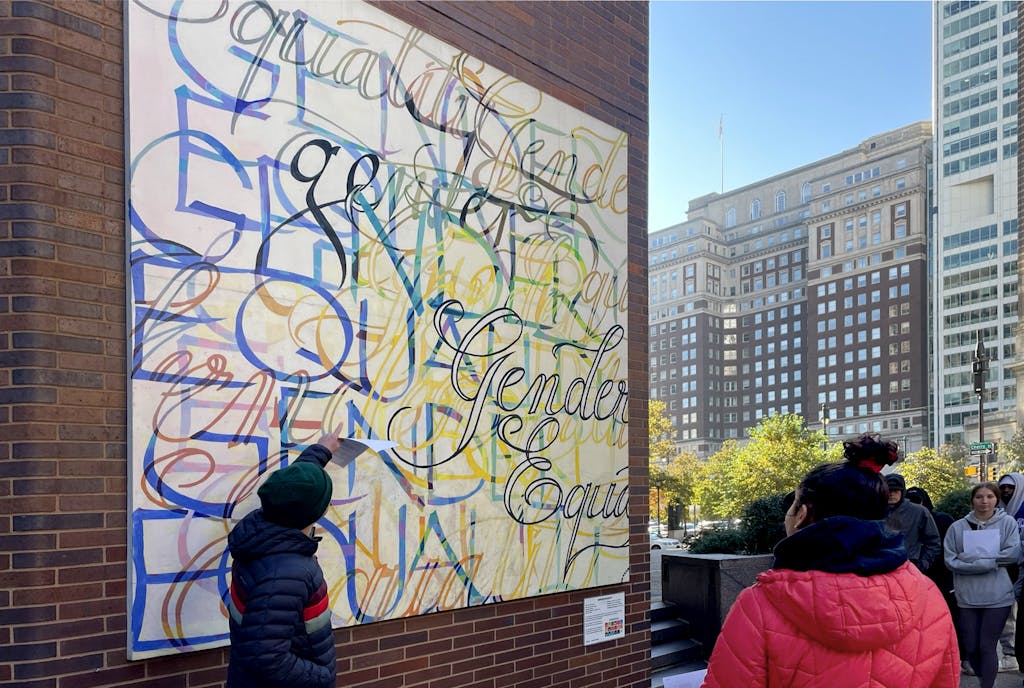
Organizations in Philadelphia are engaging with the Global Goals through community-centric art. Mural Artist: Barbara Smolen Photo: Courtesy of Global Philadelphia Association
The variety and creativity of these examples demonstrate how diverse applications of the Goals can be. And they underscore an enduring truth: The strongest and most sustainable examples of SDG engagement in the United States are rooted in local priorities, values, and strengths.
Building SDG Momentum in 2024
Over the past five years, the Brooking Institution’s Center for Sustainable Development and the United Nations Foundation have partnered on the American Leadership on the SDGs initiative, responding to interest from people working across the country on the SDGs to come together, share knowledge, and develop new innovations in partnership. This program cultivates stories of innovation and leadership from across the country and provides a platform for thought leadership on the potential of the Goals to be leveraged at the national level and across sectors. Further, it has brought people together to share and learn from these stories and the incredible knowledge and place-based experiences of leaders of all ages and backgrounds. This work has revealed that in the U.S., while knowledge of the SDGs as a framework is low, Americans generally align with the values embedded in the Goals. Many Americans are, in fact, already working to advance the Goals in some way, and generally align with the values embedded in them.
In 2024, we must ask ourselves how we can further leverage the SDGs to offer stories and tools for collaboration and progress at a time of polarized, crisis-oriented rhetoric, and in an election year that is widely seen as having tremendous implications for United States’ global standing and its domestic efforts in pursuit of sustainability and climate resilience. As a starting place, we can learn from the innovations and initiatives from the first half of the implementation of the 2030 Agenda to accelerate progress on equity, prosperity, and environmental stability. National leaders, including President Joe Biden, have called for a recommitment to the Global Goals. President Biden’s remarks last fall at the United Nations General Assembly marked the first time a sitting U.S. president publicly spoke about the SDGs since 2016.
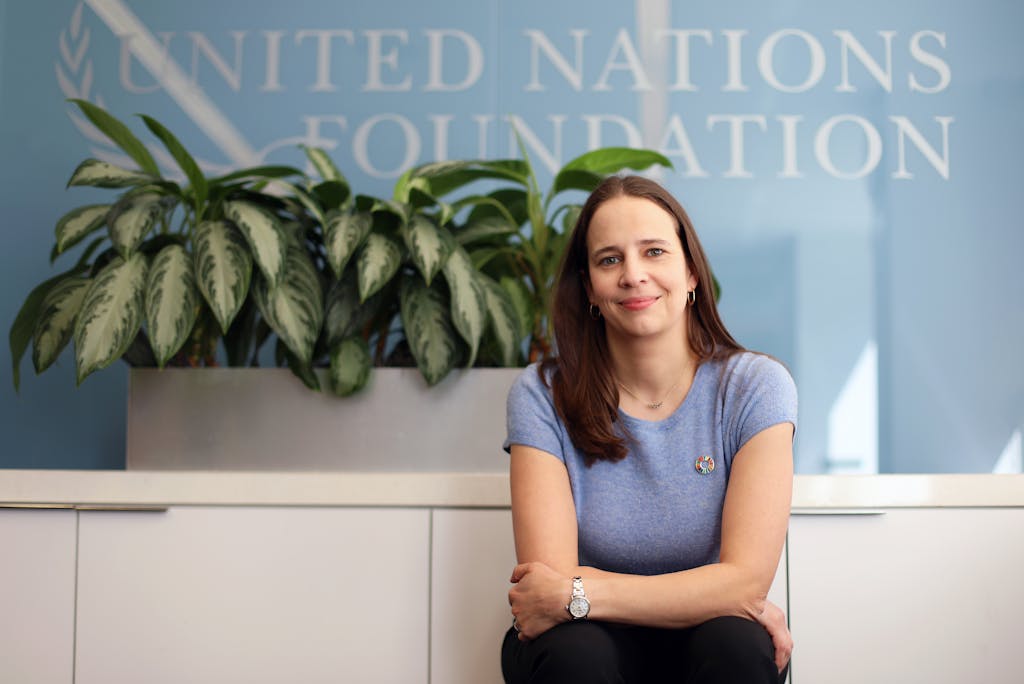
Caroline is on a mission to highlight — and connect — everyday champions and changemaking communities at the heart of SDG progress in the U.S. Photo: Madalyn Owen
There is a movement here that is gaining momentum. Composed of inspiring youth, experienced professionals, and dedicated volunteers — sustainability experts and novices alike — who have identified the SDGs as an agenda for action despite a current lack of national SDG-aligned funding streams. Across the country, changemakers and champions are embodying the spirit of the SDGs by showing us what resilience, sustainability, and equity look like in action.
Want to learn more about American Leadership on the SDGs?
Throughout the year, we’ll be highlighting innovative solutions, inspiring success stories, and practical resources from people across the U.S. who are driving progress on the SDGs in their own backyard.
from Humanitarian activities – My Blog https://ift.tt/zybQH0c
via IFTTT


